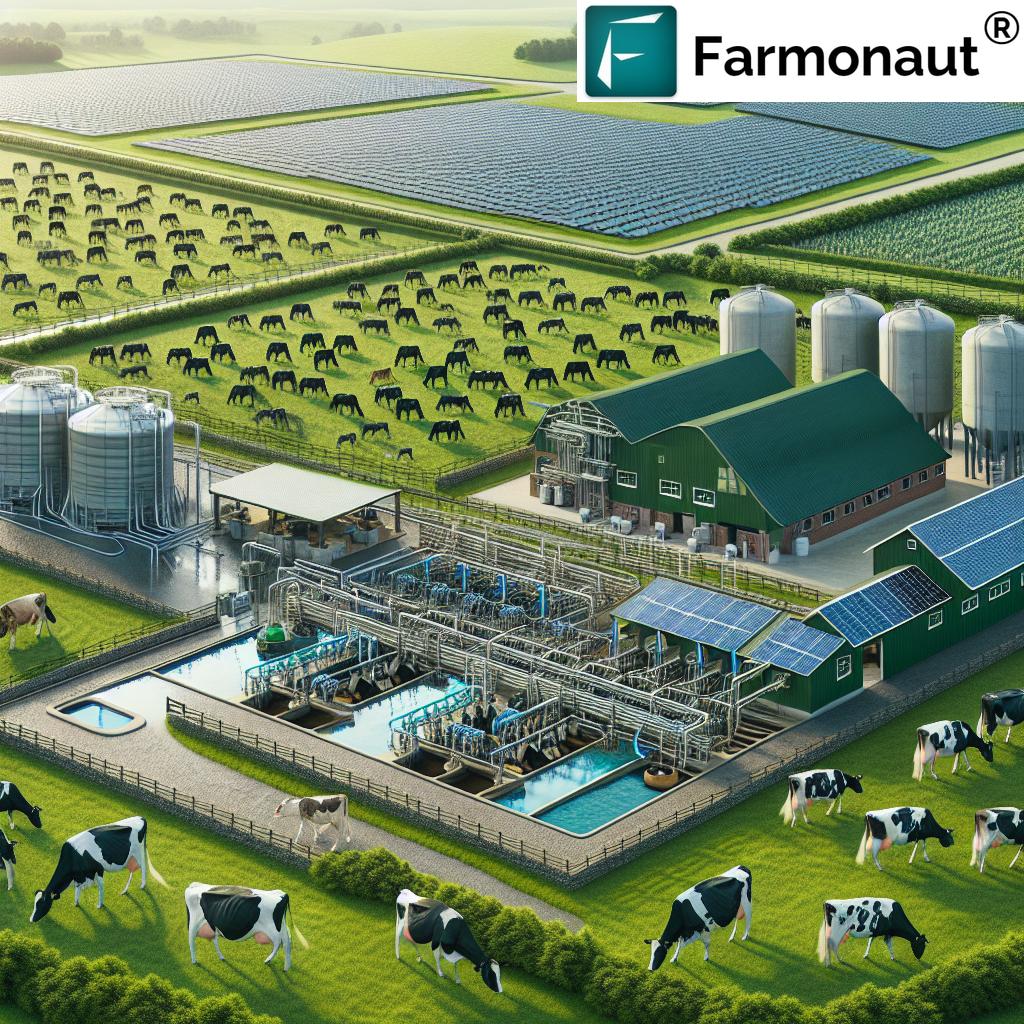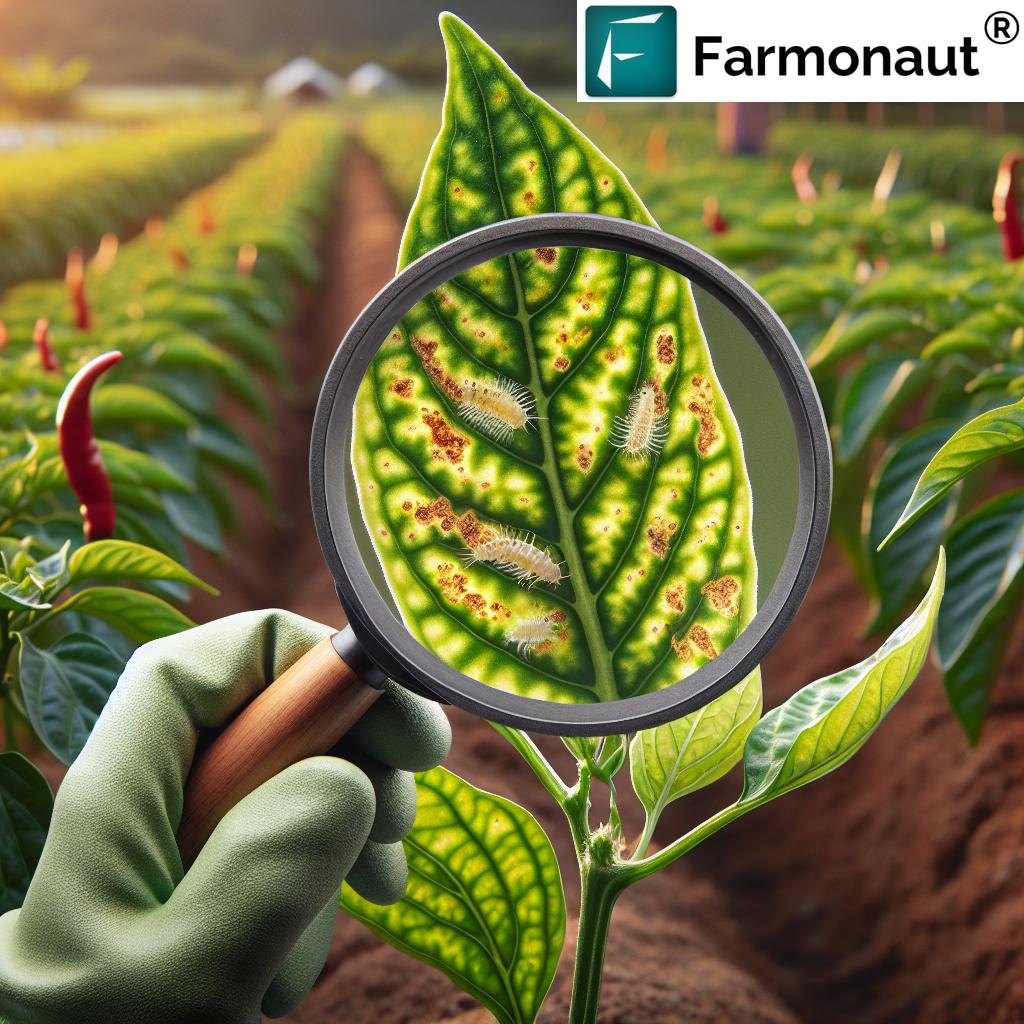Department of Agri 2026: Sustainable Agriculture Future
“By 2026, the Department of Agri targets a 30% increase in sustainable farming acreage across the country.”
Table of Contents
- Introduction: The Critical Role of the Department of Agri
- Understanding Global Agricultural Challenges (2025 & Beyond)
- The Heart of Sustainable Agriculture: Department of Agri’s Mission
- Key Sustainable Practices Driven by Departments of Agriculture
- Precision Agriculture and Soil Health Monitoring
- Department of Agri and Climate Resilience Initiatives
- Frontline Innovations and Technologies in Sustainable Agri
- Comparative Initiatives and Impact Table
- Eco-Economic Viability: Supporting Rural & Farming Communities
- Food Safety and Quality: New Standards and the Department’s Role
- Global Strategies and Leadership: Department of Agriculture on the World Stage
- Farmonaut’s Satellite Technology: Enabling Modern Sustainable Agriculture
- Frequently Asked Questions
- Conclusion: Department of Agri—Vision for a Sustainable Future
Introduction: The Critical Role of the Department of Agri
Sustainable agriculture is entering a defining era in 2026. As we collectively react to the intensifying challenges of climate change, resource depletion, and rapid population growth, the function of the Department of Agri in shaping a resilient food future is undeniably critical. The world’s agriculture departments—led by institutions such as the US Department of Agriculture (USDA) and mirrored by their counterparts in other nations—now sit at the intersection of scientific innovation, policy leadership, and farm-level transformation.
The role of these departments ranges from advancing sustainable farming practices, improving food security, to supporting rural economies while proactively safeguarding our natural resources. Within this framework, the agricultural department head not only leads the way in formulating strategy but also in the pragmatic implementation of initiatives that touch every facet of modern farming life.
Understanding Global Agricultural Challenges (2025 & Beyond)
The pressure on agriculture has never been more intense:
- Population Growth: By 2026, world population continues to rise, driving demand for increasing yields to feed billions.
- Climate Change: More frequent extreme weather events, shifting rainfall, and growing droughts threaten the productivity of traditional farming systems.
- Resource Depletion: Soil degradation, water scarcity, and loss of biodiversity undermine the long-term viability of agricultural systems worldwide.
- Food Security: Ensuring all people, at all times, have access to sufficient, safe, and nutritious food is an ongoing, multifaceted challenge.
These rapidly intensifying challenges place the department of agri at the frontlines of global efforts to preserve our environment while providing for humanity’s needs.
The Heart of Sustainable Agriculture: Department of Agri’s Mission
At the heart of every agriculture department’s mission is the promotion of sustainable farming practices that not only enhance productivity but also preserve environmental integrity.
Modern farmers are shifting from the sole focus on maximizing crop yields to innovative methods that balance profitability and ecological stewardship.
- Promoting sustainability: The agriculture department consistently encourages integrated pest management, conservation tillage, and innovative input management.
- Supporting innovation: National and global departments leverage scientific research and cross-sector collaboration for breakthrough solutions.
- Ensuring food security and inclusivity: Policies and extension services are tailored to serve not just large agribusinesses, but smallholders, family farms, and rural economies.
Key Sustainable Practices Driven by Departments of Agriculture
The role of the department of agri extends to promoting an array of practices and initiatives designed to reduce environmental impact and improve the resilience of farmers.
Among the top advancements for 2025 and beyond:
- Precision agriculture: Using technology to optimize usage of inputs such as fertilizers, water, and pesticides—minimizing waste and environmental harm.
- Soil health monitoring: The continual use of soil testing and satellite-based observation ensures modern farmers can replenish and sustain critical soil matter.
- Integrated pest management: Reducing reliance on chemicals, leveraging biological controls, and improving crop health through smart interventions.
- Conservation practices: Restoration of biodiversity via agroforestry, cover cropping, and conservation tillage to safeguard natural resources.
- Climate resilience and carbon sequestration: Adopting drought-resistant crop varieties, improving soil organic matter, and increasing agroforestry coverage.
Precision Agriculture and Soil Health Monitoring: The Department’s Game-Changer
Precision agriculture has become a cornerstone in the strategic efforts of the department of agri and agriculture department heads worldwide. These practices allow for targeted application of resources, yielding three core advantages:
- Enhanced productivity: By matching inputs with plant needs at every stage, farmers achieve higher yields without compromising soil health.
- Resource efficiency: Water, fertilizer, and pesticide use is optimized—even as challenges like drought and resource depletion intensify.
- Reduced waste and harm: The department supports the shift from intensive farming practices towards data-driven and environmentally mindful production.
With support from technologies such as large-scale farm management tools and carbon footprint monitoring platforms, modern agriculture can better adapt and demonstrate measurable improvements in efficiency and sustainability.
Real-Time Monitoring and Advisory Systems
With advancements such as satellite-based monitoring and AI-driven advisory systems (like those offered by Farmonaut), farmers now receive timely insights on crop health, soil matter, and pest threats. These tools, accessible on web or mobile, help farmers:
- Detect and manage stress factors before they become adverse effects
- Plan for resource allocation and irrigation with weather insights
- Reduce overall waste and environmental harm
Departments of agri globally are integrating such digital innovations into extension services, making sustainable farming more accessible in both developed and developing nations.
Department of Agri and Climate Resilience Initiatives
Building resilience to the unpredictability of the climate is among the highest priority for every agri department in 2026. Climate-smart agriculture—an approach advocated and widely implemented by the department of agriculture—is all about adapting and thriving in evolving environmental conditions.
- Adopting drought-resistant and pest-resistant crop varieties: Departments invest in research and disseminate resilient seeds to help farmers cope with harsher weather patterns.
- Promoting agroforestry and conservation tillage: These methods regenerate soil matter, store more carbon, and reduce erosion—safeguarding natural resources for future generations.
- Incorporating cover cropping and carbon sequestration: Increasing soil organic matter and cover cropping are now standard guidelines promoted by the department of agri head worldwide.
- Government incentives and grants: Departments of agriculture provide grants, technical training, and extension services to facilitate fast and equitable transition to resilient systems.
“Innovative climate-resilient practices are projected to improve national food security by 15% by 2025 and beyond.”
Farmers and Departments of Agri: Partners in Resilience
Importantly, the us department of ag and its international counterparts understand the need for inclusive approaches. Policies are designed to reach smallholders, improve risk mitigation via insurance tools (like those available at Farmonaut Crop Loan and Insurance solutions), and ensure nobody is left behind.
Frontline Innovations and Technologies in Sustainable Agri
Across agriculture departments and modern farms, a wave of innovative technologies is redefining what’s possible for food systems in 2026:
- Remote sensing and satellite imagery: Real-time crop and soil monitoring, as offered by Farmonaut, improves decision-making and identifies environmental stress.
- Automation & Robotics: Autonomous drones and precision equipment optimize everything from planting to pest management.
- AI and Data-driven Insights: AI-powered platforms (e.g., Farmonaut Jeevn AI Advisory) deliver actionable, site-specific recommendations.
- Blockchain traceability: Verifying product origin and integrity—building trust and reducing waste throughout the supply chain.
- Environmental Impact Tracking: Monitoring tools calculate and help optimize carbon footprint for individual farms, supporting compliance and eco-labeling.
Learn how real-time monitoring and Big Data platforms are empowering farmers to minimize losses and maximize output on a new scale—Farmonaut’s Carbon Footprinting is a leading example for continuous environmental performance tracking.
Comparative Initiatives and Impact Table
The table below compares major ongoing and upcoming sustainable agriculture initiatives by the department of agri for 2025 and beyond, summarizing their objective, scale, and environmental impact.
| Initiative/ Program Name | Objective | Estimated Start Year | Key Sustainable Practice Employed | Estimated Area Covered (hectares) | Expected Yield Improvement (%) | Estimated Carbon Reduction (tons/year) |
|---|---|---|---|---|---|---|
| National Precision Farming Rollout | Boost crop yields with resource-efficient methods | 2025 | Precision Agri with Remote Sensing & AI | 2,000,000+ | 20-30% | 2,500,000 |
| Climate-Smart Varietal Program | Enhance climate resilience via drought/pest-resistant crops | 2025 | Drought-resistant Varieties, IPM | 1,500,000 | 15-20% | 1,000,000 |
| Soil Health & Organic Matter Initiative | Restore fertility and boost carbon sequestration | 2026 | Cover Cropping, Composting | 1,200,000 | 12-18% | 1,600,000 |
| Agroforestry Expansion Program | Increase tree cover for biodiversity and resilience | 2026 | Agroforestry Systems | 750,000 | 8-12% | 2,100,000 |
| Water Conservation and Management | Optimize irrigation, reduce depletion | 2025 | Micro-irrigation, Rainwater Harvesting | 2,500,000+ | 10-18% | 850,000 |
| Food Traceability & Quality Enforcement | Prevent contamination and promote transparency | 2026 | Blockchain, Data-Driven Inspections | All Major Markets | — | 250,000 (via reduced waste) |
Eco-Economic Viability: Supporting Rural & Farming Communities
Beyond environmental stewardship, the department of agri is deeply invested in the economic viability of farming communities. Key focus areas include:
- Market access and transparency: Departments foster equitable supply chains and empower farmers to access local, national, and global markets. Blockchain-based product traceability tools further promote trust and authenticity.
- Financial tools and risk management: Department of agri initiatives such as subsidized crop insurance, satellite-based loan verification (Farmonaut’s Crop Loan and Insurance services), and support for alternative credit systems enable more resilient farm businesses.
- Training & extension services: Regular programs, technical workshops, and digital tools are vital for transition to new systems and technologies, especially in rural regions.
- Preventing marginalization: Special emphasis is placed on family farms and smallholders to ensure resources and extension support reach all segments of the population.
Access our satellite-based platform using Farmonaut Web App, Android, and iOS App buttons above to experience real-time, site-specific insights for optimal farm management. For developers and enterprises, robust Farmonaut API access is available, with the full API developer documentation for seamless integration.
Food Safety and Quality: New Standards and the Department’s Role
Assuring the safety and quality of our food has always been a core responsibility of the department of agriculture and its regulatory counterparts. For 2026 and beyond, new standards and technologies are transforming how risks are managed, and consumer trust maintained:
- Traceability and Transparency: Mandated blockchain integration and traceability platforms ensure food origin can be verified at each stage—from soil to sale.
- Education campaigns: The department promotes healthy, sustainable consumption and raises awareness on organic food standards and minimizing food waste.
- Organic and ethical production: Implementing and enforcing standards that facilitate production and labeling of organic goods—encouraging uptake and consumer confidence.
- Inspection and enforcement: Field-based checks using digital, satellite, and blockhain tools to prevent contamination and swiftly manage food safety events.
Global Strategies and Leadership: Department of Agriculture on the World Stage
The interdependence of global food systems is clearer than ever. That’s why departments of agriculture including USDA and its counterparts in other nations strongly advocate for:
- International knowledge-sharing: Disseminating research and best practices on climate-smart agriculture and technologies.
- Coordinated policy: Joint initiatives to promote fair trade, resilience, and sustainability in developing countries.
- Global food security: Supporting resilient systems worldwide, recognizing the interconnectedness of climate, economy, and agricultural productivity.
On an international scale, adopting digital solutions for fleet and resource management enables large agribusiness and government departments alike to optimize the logistics of everything from input delivery to surveillance, cutting costs and supporting food security at scale.
Farmonaut’s Satellite Technology: Enabling Modern Sustainable Agriculture
We at Farmonaut are dedicated to supporting departments of agriculture, farmers, and businesses around the world with affordable satellite-driven solutions that enhance productivity, guide sustainable resource management, and proactively address climate challenges.
- Real-time monitoring: Our multispectral satellite imagery delivers insights on crop health, soil conditions, and environmental risk—accessible from any device.
- AI-based advisory: Our Jeevn AI system provides real-time, tailored advice for maximizing yields and reducing losses.
- Blockchain traceability: Supporting the department of agri’s standards, our solution enables verifiable, fraud-resistant food supply chains.
- Environmental footprinting: Tools for carbon footprint monitoring are critical to sustainable farming and climate policy compliance.
- Resource management: Our platform features tools for fleet and machinery tracking—cutting operational costs and ensuring safety.
Our subscription-based platform (see pricing table below) is designed to scale with your needs—from individual fields to national programs—accessible via web, Android, and iOS apps for seamless, mobile-friendly data access:
From farmers needing actionable field-level insights, to departments targeting climate resilience and yield optimization, our technologies are transforming the future of agriculture in line with the department of agri’s 2026 vision.
Frequently Asked Questions
What is the main role of the department of agri in 2026?
The department of agri is tasked with advancing sustainable agricultural practices, improving national and global food security, supporting rural economies, and safeguarding environmental resources. It leads in policy, research, and the promotion of innovative technologies tailored for resilience and productivity.
How are departments of agriculture promoting climate resilience?
Through grants, technical training, research, and new policy frameworks, departments enable the adoption of climate-smart crop varieties, soil health initiatives, agroforestry, and carbon sequestration practices—equipping farmers to withstand and adapt to weather extremes.
What are some examples of sustainable farming practices adopted in 2026?
Key practices include precision agriculture, integrated pest management, organic production, soil health monitoring, water conservation, agroforestry, and blockchain-based traceability. These methods optimize resource usage and reduce environmental harm.
How does technology aid the department of agri’s mission?
Innovative technologies such as satellite monitoring, AI advisory, blockchain systems, and digital extension apps drastically improve the efficiency, scalability, and inclusivity of sustainable practices. They aid in data-driven decision-making and compliance.
How can I, as a farmer or agri-business, benefit from Farmonaut’s solutions?
With Farmonaut’s satellite-driven platform, you can monitor crop health and soil conditions in real-time, receive AI-based advice, manage fleets, and implement best sustainable practices to increase productivity, reduce waste, and comply with current environmental standards. Access is available through web, Android, and iOS apps.
Conclusion: Department of Agri—Vision for a Sustainable Future
The Department of Agriculture in 2026 stands as a pivotal institution in shaping a food-secure, resilient, and sustainable future. Whether through driving cutting-edge research, setting and enforcing new sustainability standards, or supporting farmers with training and digital resources, the agri department is the backbone of a lasting agricultural legacy.
With innovative technologies, inclusive policies, and unwavering leadership, the department ensures that the food systems of tomorrow meet the needs of the growing global population—without ever compromising the planet we all depend upon.
Together, as we move forward in 2026 and beyond, the vision of the department of agri—backed by technology partners like Farmonaut—offers hope and tangible solutions for a thriving, resilient, and inclusive agricultural future.













